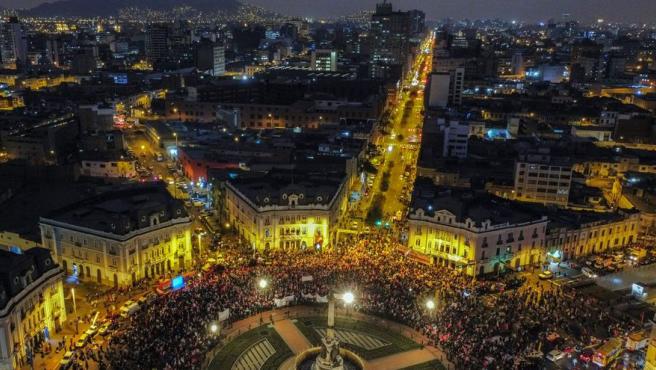The new president of Peru who is elected on Sunday from the presidential ballot between Pedro Castillo (left) and Keiko Fujimori (right) will be elected by a few thousand votes , according to two new polls released privately this Friday.
As it happened five years ago, when Pedro Pablo Kuczynski won the Presidency from Keiko Fujimori by just 40,000 votes – 50.12% of the valid votes compared to 49.88% – for this Sunday an almost equally tight result is expected, where votes from abroad aim to be decisive.
Just 48 hours after the vote, no poll can give either candidate the winner , since the distance between the two is so close that it is within the margin of error.
According to the poll conducted by the Ipsos pollster this Friday of 1,233 people , Castillo is slightly above Fujimori with a 1% advantage in valid votes, similar to other polls by the same pollster made last week.
Castillo obtains 44.5% of the votes cast compared to 43.6% for Keiko Fujimori, while 11.6% are white and flawed votes, which extrapolated to valid votes gives 50.5% for the leftist’s candidate Peru Libre party and 49.5% for the candidate of the Fuerza Popular party.
Expectation with the foreign vote
However, another poll conducted between Wednesday and Thursday by the CPI pollster of 1,600 people puts Fujimori ahead, with a margin of 0.2 percentage points over Castillo.
In the CPI study , 45% of the votes cast go to Fujimori and 44.8% to Castillo, while 10.2% were blank or invalid votes, which translates into 50.1% of valid votes. for the daughter and political heir of former president Alberto Fujimori (1990-2000) and 49.9% for the teacher and union leader.
Unlike the Ipsos survey, whose sample covers the entire national territory, CPI did not take into account for its study two of the 24 departments into which Peru is politically divided .
Both polls coincide in pointing out the decisive importance in deciding the balance of the foreign vote , which is not reflected in any survey and which, predictably, based on data from previous elections, will be mostly favorable to Fujimori.
For Ipsos, the foreign vote can represent an increase of 0.5 percentage points in favor of Fujimori over the figures of his poll, while for CPI it can even be between 0.7 and 1 point.
Advantage shortened to a minimum
During the last two months of the second round campaign , Fujimori has managed to equalize the contest that at the beginning started with a disadvantage of between 10 and 20 points against Castillo, whose inconsistencies have not allowed him to add more adhesions and have even reduced votes.
These polarized elections will also be a kind of plebiscite on the country’s economic model.
While Fujimori is in favor of continuing the neoliberal model that his father implanted 30 years ago, Castillo promises to reform the state with a new Constitution and the nationalization of natural resources.
The winner will come out of the votes of more than 25 million Peruvians summoned this Sunday to the polls to elect the person who will govern the country for the next five years and who will assume power on July 28, the day on which Peru will commemorate the 200 years of its independence.


